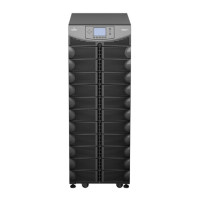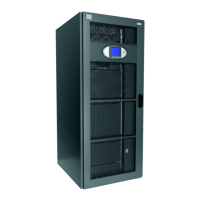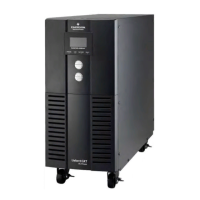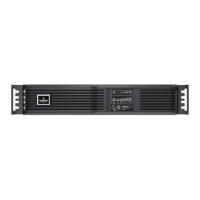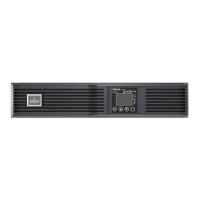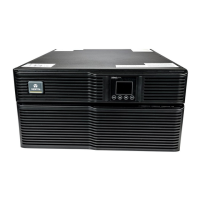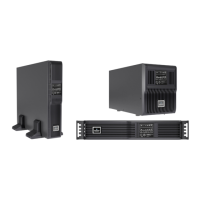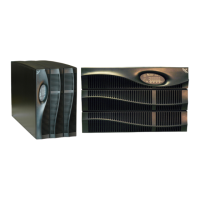2.2.1 Distribution Room
The UPS is designed for indoor installation, which should be installed in clean and well-ventilated environment, so as
to keep the ambient temperature within the specifications range.
The internal fans provide the forced air cooling for the UPS. Cooling air enters the UPS through the front ventilation
holes, and exhausts the hot air through the back ventilation holes. Therefore, do not restrict the ventilation holes. The
front, rear and side panels of the UPS should be kept at least 200mm distance from the wall or consecutive
equipment, so as not to obstruct the UPS ventilation and heat rejection. Otherwise, the UPS internal temperature will
rise, which will shorten the UPS life.
If necessary, an indoor extractor fan should be installed to keep the indoor temperature from rising. An air filter should
be used where the UPS is to operate in a dirty environment.
Note
The UPS is only suitable for installing on the concrete surface or other non-flammable surfaces.
2.2.2 Battery Room
A small amount of hydrogen and oxygen will be generated at the end of battery charging, therefore, you must ensure
the fresh air ventilation of battery installation environment to meet the EN50272-2001 requirements.
The battery ambient temperature should be the constant temperature, for the ambient temperature is the main factor
to affect the battery capacity and life. The battery standard operating temperature is 20°C, operation above this
temperature will shorten the battery life, and operation below this temperature will reduce the battery capacity. If the
battery average temperature in operation rises from 20°C to 30°C, the battery life will be reduced by 50%; if the
battery temperature in operation exceeds 40°C, the battery life will be decreased exponentially. In general, the
enabled ambient temperature of the battery is 15°C ~ 25°C. The battery should be kept away from heat and
ventilation holes.
When the UPS uses an external battery, you must install a battery protective device (such as fuse or circuit breaker)
in areas near the battery, and use the shortest wiring distance for the protective device and battery connection.
2.2.3 Storage
The UPS must be stored indoors to protect against the excessive moisture or overtemperature environment, when
the UPS does not need to be installed immediately. The battery requires dry and low temperature, well-ventilated
environment for storage, and the most suitable storage temperature is 20°C ~ 25°C.
Warning: Battery Hazards
During the battery storage period, the battery must be periodically charged according to the battery instructions. You can connect
the UPS to the mains temporarily when charging the battery, so as to charge the battery for battery activation.
2.3 Installation tools
Prepare installation tools according to Table 2-1. The tools must be insulated and ESD-proof processed prior to
use
.
Table 2-1 Installation tools list
